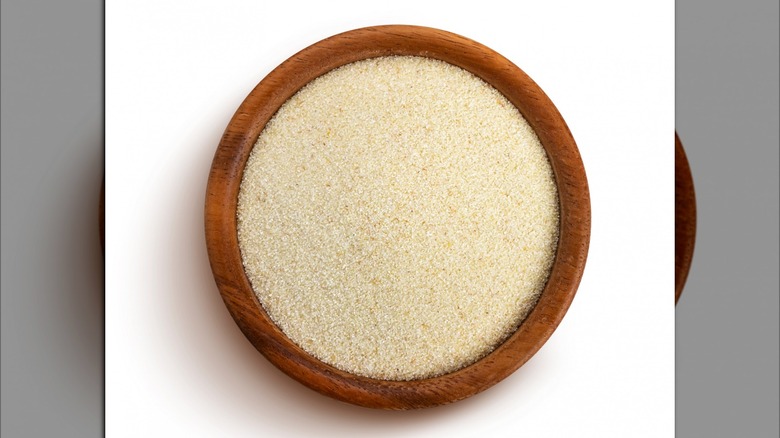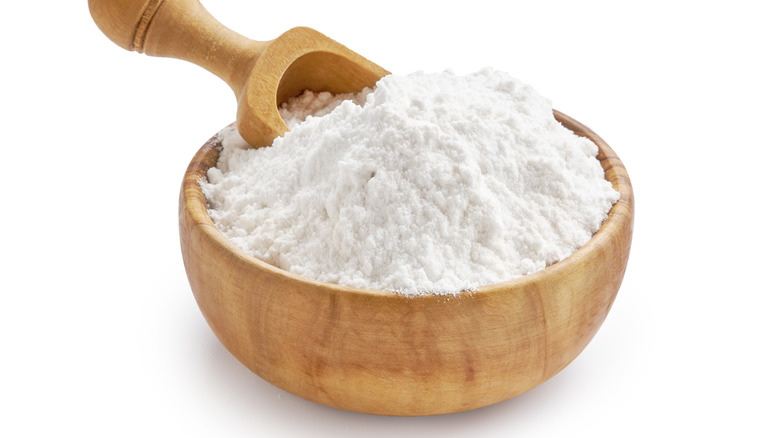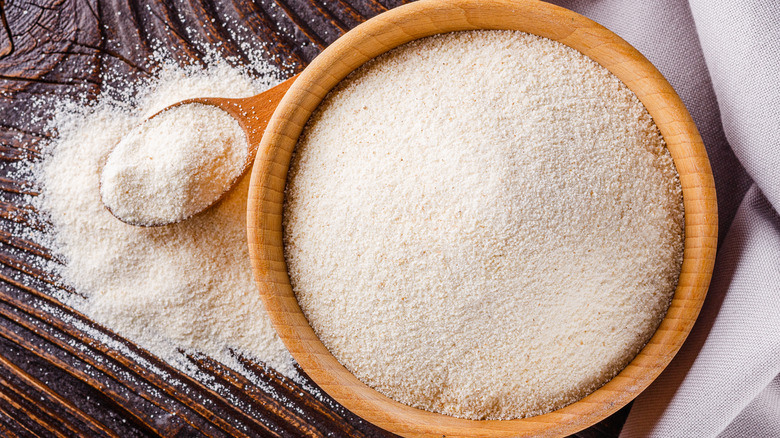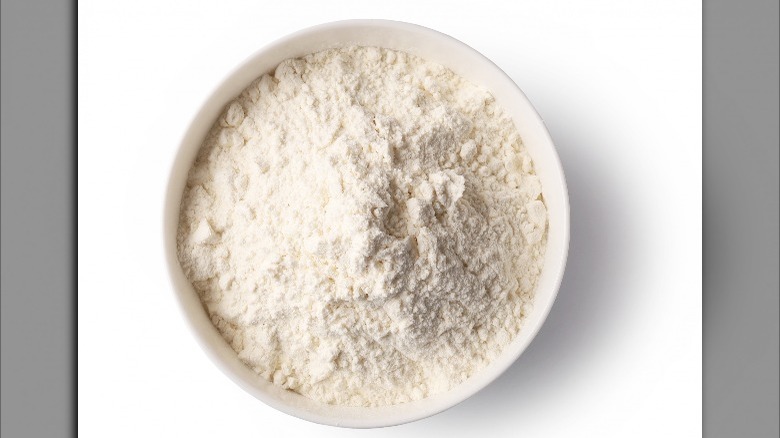Semolina Vs. White Flour: Which Is More Nutritious?
If you're a home chef, you're probably familiar with the many wonders of flour. Flour is basically a godsend when it comes to baking a wide variety of items, and is an extremely useful ingredient. Flour is basically made by grinding or milling grains, but here's where it gets interesting: White flour is essentially normal flour that is treated using bleach, which is how it gets its distinctive white color. Semolina, on the other hand, is a type of flour that is prepared with the help of durum wheat.
Both semolina and white flour have their set of advantages and drawbacks. Interestingly, depending on where you are in the world, you'll find that flour is used in several ways in the cooking process. For example, in Scandinavia, it's common to eat semolina in the form of a porridge during breakfast. Intriguing, right? A Redditor from Finland shared a fascinating tidbit information about semolina porridge in their family. They wrote that they often hide a piece of almond in the porridge and whoever is able to locate it gets a prize. Another Redditor from Sweden wrote that semolina is a "fairly common breakfast food, usually served with cinnamon, sugar, butter, and milk."
Semolina and flour are fairly different
White flour is prepared by milling grains with the help of stones or steel wheels and then bleached, while semolina flour is made with steel rollers and is composed of coarse durum wheat kernels that are converted into flour. Semolina is specifically used for making pasta, and works well for foods such as dumplings and hot cereal.
Plus, semolina is known for having a relatively sweet and nuttier flavor profile than white flour. But hold on: it is also important to remember is that semolina has high levels of gluten, much more than other types of wheat, something that anyone with a gluten intolerance needs to keep in mind. Meanwhile, white flour is relatively versatile and is often found in everyday items such as bread.
However, wheat milling machines end up removing a major part of the grain's nutrients, something that makes white flour a lot less healthier than its peers. Additionally, per SF Gate, white flour doesn't have a lot of fiber and can have an adverse effect on blood sugar levels, making you feel hungry faster than other options such as semolina.
Semolina is the clear winner
In terms of nutrition, a side-by-side comparison indicates that semolina is definitely better for your health overall compared to white flour. Again, those with a gluten intolerance need to stay away from the ingredient. According to Verywell Fit, a cup of all-purpose white flour has 455 calories, 1.2 grams of fat, 95.4 grams of carbs, and 12.9 grams of protein.
Meanwhile, you're looking at higher calories (601) in a cup of semolina. The protein content, though, is significantly higher at 21 grams, a definite advantage. It also has 1.8 grams of fat and 122 grams of carbs. In terms of health perks, white flour is good for its copper, zinc, iron, and phosphorus levels. Semolina wins this round, though. It is high in minerals, protein, and B-vitamins. Semolina is also known for being beneficial for your digestive system. Additionally, it barely has any saturated fat (via Livestrong.) In a nutshell, white flour is much more refined than semolina and has a lower number of health benefits.
Both semolina and flour are versatile
Both white flour and semolina have a plethora of options in the food department. For one, you'll be rewarded handsomely if you use semolina for dishes like gnocchi and pasta. Occasionally, you can use semolina while making bread too, especially if you're trying something special like tartine that calls for different types of flour. Pro tip: semolina goes rather well with eggs. And if you're open to experimentation, you can also add semolina to dishes such as puddings, scones, custards, and more.
White flour is even more diverse than semolina and pops up in many dishes and desserts; you can't go wrong with white flour if you're using it to make fresh bread, puff pastry, bagels, buns, and more. Or take inspiration from celebrity chef Robert Irvine and prepare your own white flour tortillas from scratch (via the Food Network.) The possibilities are endless.



